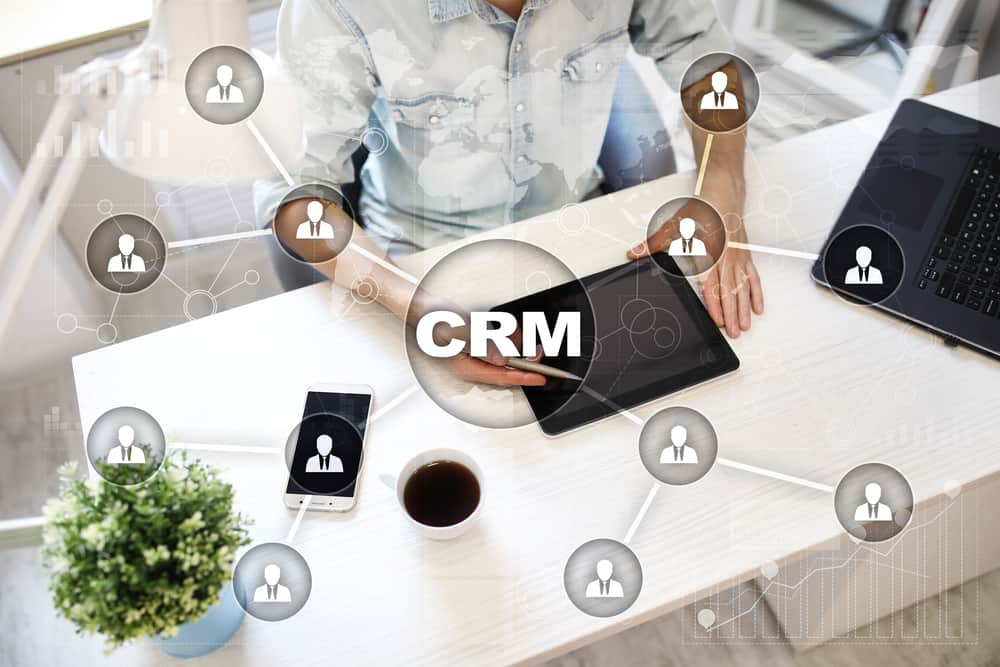Article Summary: Many small businesses are discovering the value of CRM software to monitor and help them maintain their customer relationships. In addition choosing the right CRM solution for your business, there are a few best practices that will help your business capture as much value you can out of the solution you choose:
- Identify the steps within your sales process and the customer journey
- Consider how marketing data will be tracked within your CRM software and how it influences the sales process
- Ensure that the solution you choose meets your needs, has the features and functionality you need, and meets your budget
- Establish a process for using the solution and train the employees that will be using the solution
- Use the analytics within the software to optimize how your team uses the tool to meet your needs
Keep reading to learn more about CRM software, how to choose the right tool for your business, and who to measure the ROI of your investment in the solution.
Customer relationship management software has become one of the most important tools for business success today. Companies that use CRM effectively can see a return on investment of 245 percent, a Forrester study found.
As the CRM market grows, the number of available options is expanding, which can make choosing the right tool for your business challenging. Additionally, software alone isn’t enough to CRM effectively without a sound deployment strategy. To assist you with using CRM to grow your small business, here is a guide to today’s leading CRM solutions, along with some tips on best practices for using your CRM tool, tracking your return on investment and what to do if you can’t afford CRM yet.
What Is CRM Software?
Before shopping for CRM solutions, it’s important to have a good understanding of what customer relationship management software is so you know how it can help you business and what features to look for in a solution. On a basic level, a CRM is a software tool to help your sales team make more sales by automatically organizing and applying data about your prospects and customers. On a more advanced level, it can help all areas of your business by integrating your sales data with other important data such as marketing and customer service data, boosting your overall efficiency as well as your revenue flow.
You can think of a CRM as the digital version of a sales representative’s address book. At one time, sales representatives used Rolodex files or other manual methods to keep track of their prospects’ contact information so they could make sales calls and schedule sales meetings. CRM tools are designed to do this digitally, automating the process of tracking customer information and managing sales activity.
CRM tools let you store not only customer contact information, but also other information about prospects and customers. This includes demographic profiles based on social media and other sources of data, information about the history of interactions with your sales representatives and customer purchase histories.
Your CRM can store this type of data about individual customers as well as about your customer base as a whole. When combined with analytics, this enables you to spot marketing and sales trends among your prospects and customers, identify which prospects best fit your ideal buyer profile and see how many prospects you have who are ready to buy versus how many are still in an earlier phase of the sales cycle. You can also see which products are most likely to appeal to different customers based on their purchase history and demographic profile.
CRM tools can also help automate your management of your sales process. You can automate processes such as sending out prospecting messages, scheduling sales meetings and scheduling follow-up contacts. If you have a sales team, your sales manager can use your CRM to assign prospects to your representatives. Sales managers can see at a glance which of your sales reps are your top performers, which reps are currently available and which reps are best matched to your current hot prospects.
CRM can help both your sales department and other departments of your company. Today’s CRM solutions enable you to integrate sales data with data from your customer service department, marketing, product inventory, accounting, and other areas of your business. For example, your CRM tool can prompt your call center representatives with product upsell recommendations based on a customer’s profile and buying history. CRM data can also be used to optimize your marketing and inventory management by letting you know which products are in the most demand by your target market. In these and other ways, CRM tools can benefit your whole business.
Popular CRM Solutions
The CRM market is currently led by five major players:
- Salesforce
- SAP
- Oracle
- Microsoft
- Adobe
Among these, Salesforce specializes in CRM and is best-suited for small businesses, with a comprehensive package that integrates contact management, sales, marketing, worker tracking, and artificial intelligence-powered analytics. SAP Digital for Customer Engagement is enterprise-oriented and is designed to integrate with the company’s popular enterprise resource planning software. Oracle’s Sales Cloud is distinguished by strong business intelligence and report generation capabilities. Microsoft Dynamics CRM is designed to integrate with the company’s Office 365 suite and is a good fit for companies using that software. Adobe Marketing Cloud includes CRM features as part of a broader marketing suite.
Best Practices to Get the Most out of Your CRM Solution
You’ll get the most out of your CRM solution if you follow a few best practices:
- Map out the sales process you will use your CRM to automate. What are the steps in your sales process and in your customer life cycle? Which steps will you use your CRM to automate? Defining this can help guide your CRM tool selection. For example, if you’re just planning to use your CRM to record contact information and track leads, you may be able to get by with a simpler CRM solution than if you intend to use advanced sales analytics tools.
- Consider how your sales process relates to your marketing and customer service processes as well. How will information from your marketing campaigns flow into your CRM database? How will it be used by your customer service team?
- Choose a CRM solution suited to your needs. Consider what you need your CRM to do, what features you need, how many users your CRM needs to support, and your budget.
- Use your CRM provider’s training resources to learn how to use your tool’s features.
- Establish standard operating procedures for using your CRM solution and train your workforce how to implement these.
- Use your CRM’s analytics tools to optimize your use of your sales data as well as your operational efficiency at using your CRM.
Tracking Your Return on Your CRM Investment
To make sure you’re getting the most of out of CRM investment, it’s advisable to track your ROI by tracking some key metrics:
- How many sales calls or marketing touches does your sales team make?
- How many calls or touches does it take to make a sale?
- What is the average length of time it takes from initial contact with a prospect to the time you close a sale?
- What is your average value generated per customer both per sale and over the lifetime of a customer?
- How frequently are your sales representatives generating cross-sell and upsell sales?
- What is your client retention rate?
You may also choose to track other data related to the labor saved by your CRM. For instance, you can track how many more leads your representatives are able to generate per week using your CRM than they were before adopting your CRM.
What If I Can’t Afford CRM Yet?
With the range of pricing available for CRM tools, including free tools such as those mentioned above, you should be able to start using basic CRM no matter what your budget is. Consider starting with a free CRM tool to capture leads, which will build a database you can export when you scale up to a premium CRM solution. If for some reason you don’t want to start with a free CRM tool yet, you can also start building a spreadsheet to record customer contact information and leads, which you can import into a CRM program later.
Another step you can start taking immediately is mapping out your sales process. Even before you start using CRM, this will help you define and improve the steps in your sales process. Then when you move to CRM, you can use your CRM tool to automate these steps and further improve your efficiency.
Article Summary: Like their larger siblings, many small businesses are leveraging the value of CRM software to manage their interactions with customers.



